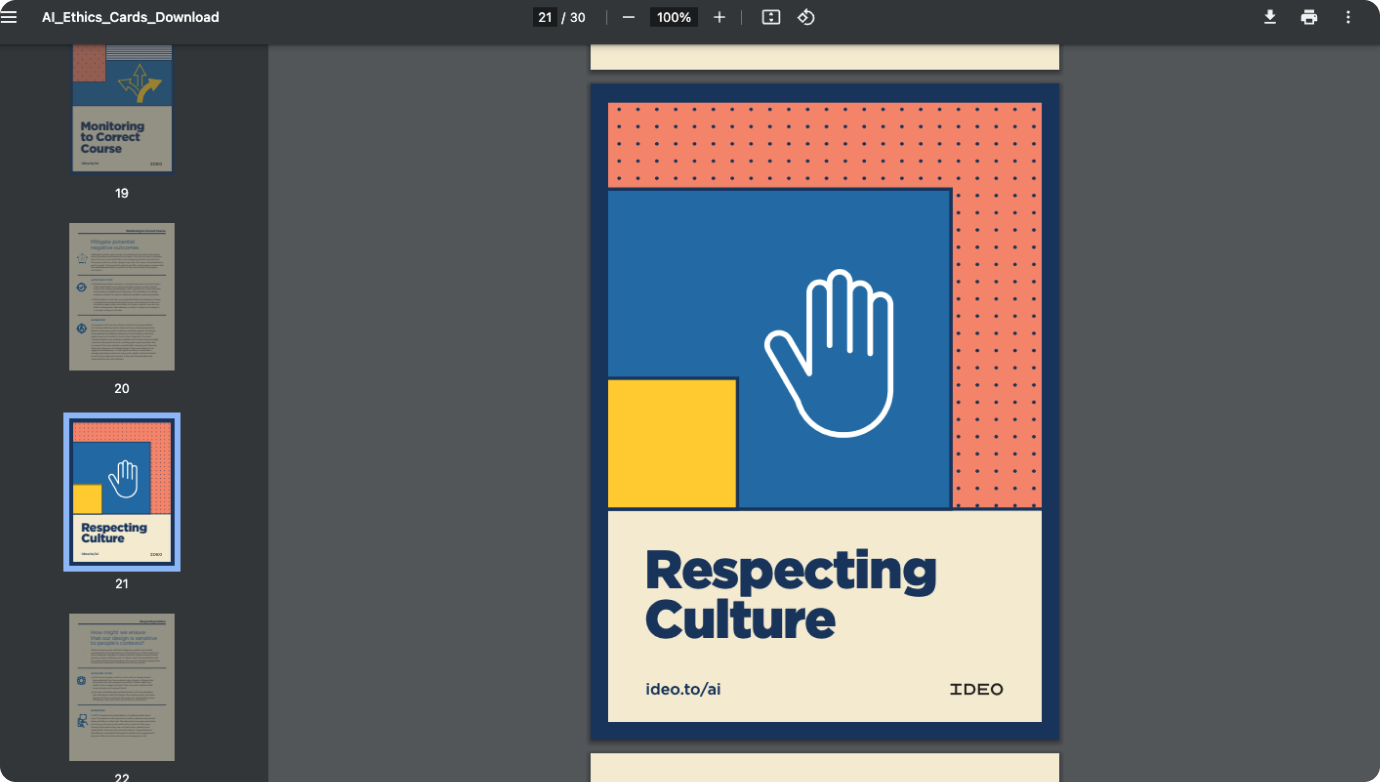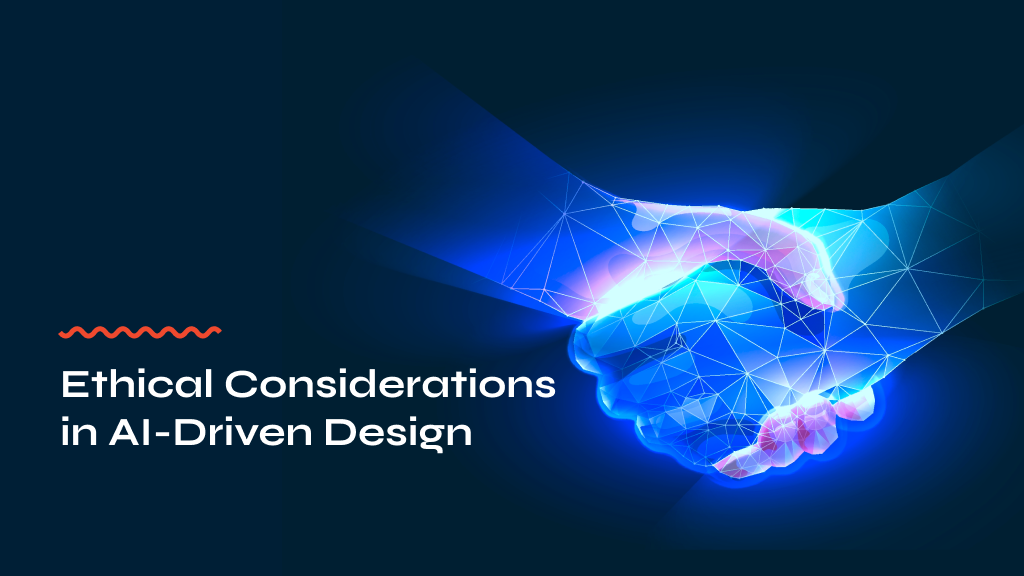Artificial Intelligence • September 6th, 2023
In the age of artificial intelligence (AI), the design landscape is undergoing a profound transformation. AI-driven design promises innovation and efficiency, but it also brings to the forefront a host of ethical considerations. In this article, we embark on a journey through the ethical landscape of AI in design. We address concerns such as bias, privacy, transparency, and more. Our aim is to provide guidance on responsible and inclusive design practices in the context of AI, ensuring that technology serves as a force for good and empowerment.

IDEO’s AI Ethics Cards are a tool to help guide an ethically responsible, culturally considerate, and humanistic approach to designing with data.
The Ethical Imperative in AI-Driven Design
Ethics in design is not a new concept, but the integration of AI amplifies it’s importance. AI systems, including machine learning algorithms, can inherit biases from training data, impact user privacy, and operate in ways that lack transparency. To navigate this landscape responsibly, designers must adopt ethical principles that guide their decisions.
Bias and Fairness in Design
Bias in AI algorithms is a persistent concern. Algorithms learn from data, and if that data is biased, the AI system can perpetuate and amplify existing biases. In design, this can manifest as discriminatory user experiences.
Mitigating Bias in Design
- Diverse Data: Designers should ensure that training data for AI models is diverse and representative, encompassing a wide range of demographics and perspectives.
- Bias Audits: Regularly audit AI systems for bias, using metrics and benchmarks to identify and rectify disparities in outcomes.
- Inclusive Design: Prioritize inclusive design practices that account for the needs and perspectives of all users, regardless of their background or identity.
User Privacy and Data Protection
AI-driven design often relies on user data for personalization and optimization. However, this raises significant privacy concerns. Users must trust that their data is handled responsibly and ethically.
Respecting User Privacy
- Data Minimization: Collect and retain only the data necessary for the functionality of your AI-driven features, minimizing the risk of data breaches.
- Transparency: Communicate clearly with users about data collection practices and obtain informed consent.
- Data Security: Implement robust security measures to protect user data from unauthorized access or breaches.
Transparency and Explainability
The “black box” nature of AI algorithms can be a barrier to trust and accountability. Users should have insight into how AI-driven design decisions are made.
Enhancing Transparency
- Interpretable Models: Use AI models that are interpretable and explainable, enabling designers to understand and articulate how decisions are reached.
- Clear Communication: Communicate to users when AI-driven features are at play, and provide information on how their data is used to personalize their experience.
Ethical AI in Decision-Making
Designers should embed ethical considerations into the decision-making process, ensuring that AI systems prioritize ethical outcomes.
Ethical Frameworks
- Ethical Guidelines: Develop and adhere to ethical design guidelines that prioritize fairness, inclusivity, and privacy.
- Ethical Review Boards: Establish internal review boards or ethics committees to evaluate the potential ethical impact of AI-driven design decisions.
- User Empowerment: Empower users with controls to customize their AI-driven experiences, allowing them to set their boundaries and preferences.
Inclusivity in Design
Inclusivity is a core ethical principle. Designers must ensure that AI-driven products and services are accessible and usable by a diverse range of users, including those with disabilities.
Designing for All
- Accessibility: Follow best practices for accessible design, making sure that AI-driven features can be used by individuals with disabilities.
- User-Centric Testing: Conduct user testing with diverse groups to identify potential accessibility and usability issues.
- Inclusive Design Thinking: Adopt an inclusive design mindset from the outset of the design process, considering the needs of all potential users.
Ethical Considerations Beyond Design
Design is just one part of the AI ecosystem. Ethical considerations should extend to data collection, model training, deployment, and ongoing monitoring.
End-to-End Ethics
- Data Ethics: Ensure that data collection, storage, and usage adhere to ethical principles, even before design comes into play.
- Algorithmic Ethics: Evaluate the ethical implications of the algorithms used, including their impact on individuals and society.
- Post-Deployment Ethics: Continuously monitor AI-driven systems for ethical issues and adapt as needed to address emerging challenges.
The Future of Ethical AI-Driven Design
As AI technology continues to evolve, so too will the ethical considerations surrounding its use in design. Designers must remain vigilant, adaptable, and proactive in addressing new ethical challenges that may arise.
Conclusion
Ethical considerations are inseparable from AI-driven design. To navigate the ethical landscape responsibly, designers must prioritize fairness, inclusivity, transparency, and privacy. By adhering to ethical principles, AI can serve as a powerful tool for innovation and empowerment, enhancing the user experience while upholding the values of responsible design. In this dynamic intersection of technology and ethics, designers have a pivotal role to play in shaping a more ethical and inclusive digital future.
If you enjoyed reading this article, please share it with a colleague or friend, and join me next week to learn about Future Trends and Challenges with AI in Product Design.



